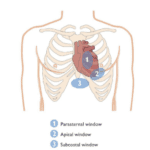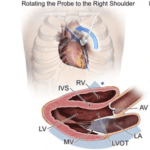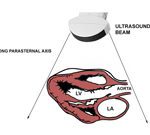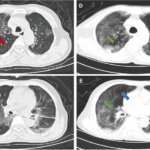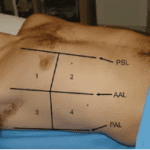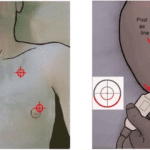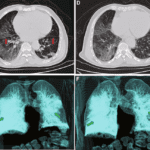Super Bowl LVII is just a few weeks away, and the World Cup final is just a few weeks behind. The two most popular sporting events in the world enthrall millions each—and endanger dozens of players. As spectators, we all know the fear of watching our favorite team’s star player tumble to the ground. We wait for them to get back up… but they don’t. Medics rush onto the field to assess the situation.
No matter the sport, point-of-care ultrasound (POCUS) could mean the difference between a trip to the emergency department (ED) and playing the rest of the game. The handheld device provides unique mobility to imaging that allows it to extend beyond hospital and clinic settings. POCUS-trained physicians can examine in-game injuries on the field to see beneath the skin and accurately determine the severity of a wound.
By providing a correct recommendation of whether or not to keep a hurt player off the field, sports medicine staff can protect that player from further harm, something that could cost them the season—or their career.
At the 2022 POCUS World Conference, attendees heard from Dr. William Krebs, D.O., who shared how POCUS has improved medical transport. It has allowed him and his team to examine crash victims at the scene and make visually-informed decisions regarding necessary next steps for the patient.
The same is true in sports medicine. Many of the most common sports injuries affect the knee and have similar causes and symptoms. Anterior cruciate ligament (ACL) tears or strains, meniscus tears, fractures, and dislocation are each caused by improper bend, jump, or rotation. Symptoms of each include a popping sensation, sudden swelling, stiffness, pain, and instability, making them difficult to identify without imaging.
The tool can also detect similar ailments in other joints as well as non-musculoskeletal (MSK) injuries, including ocular, thoracic, and abdominal wounds. With POCUS, physicians can diagnose the pathology prior to the ED and skip the guesswork of determining a minor ailment from a potentially life-threatening one.
Of course, some athletes are more susceptible to impact due to the sport or position they play. For instance, American football has the highest rate of injury. In addition to knee trauma, linemen, in particular, are likely to experience ankle sprains, labrum and acromioclavicular joint (ACJ) ailments, and concussions. In soccer, players often encounter ankle sprains, clavicle fractures, and concussions due to collisions with other players or high-speed contact with the ball.
The nature of these sports—and any sport—puts even the most prepared players at risk of injury, but that shouldn’t stop them from playing the game. Professional athletes have teams of expert trainers and medical staff to help prepare and protect players. The ideal outcome is no harm at all. To achieve this, players must undergo years of training in addition to practice and pre-game warm-ups. Coaches and trainers work to teach proper movements and educate their teams on activities that may be detrimental to their health.
To prevent tears or strains, medical staff may also use POCUS to assess the status of an athlete before playing. Doing so may highlight any weakness within the body that could become a risk in-game. The physician may then make a recommendation to rest or strengthen the area.
In recent years we have seen handheld ultrasound’s spectacular abilities continue to emerge. As both a preventative and a diagnostic tool, POCUS allows sports medical staff to carry a fragment of the clinic with them when they walk onto the field. They no longer need to guess at what’s going on beneath the surface or wait for a scan in the ED but can instead immediately see the injury live. They can provide a timely and accurate answer to the question fans, players, and coaches are asking: “Can they finish the game?”
First in EDs and clinics, now on the field and at the scene, POCUS is opening up countless opportunities for accurate diagnoses anywhere in the world. By keeping players safe and providing the answers sports physicians need, it has earned the title “Most Valuable Player.”
Interested in flexing your MVP proficiency muscles? Ready to affirm your ability to use POCUS to examine the most common sports injuries? Consider the MSK Lower Extremity Certificate from POCUS Certification Academy™.





